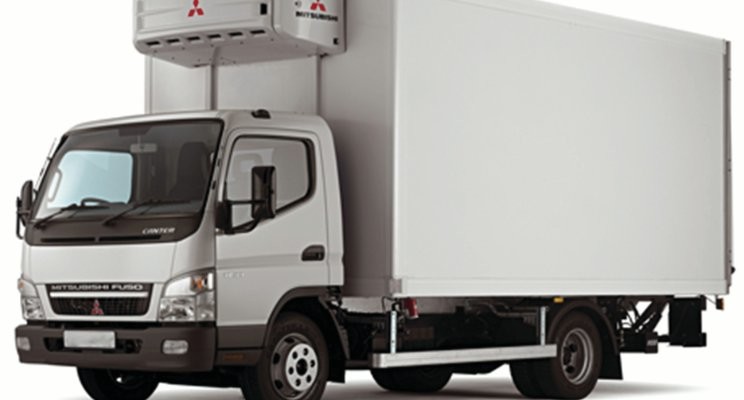How to Select a Transport Refrigeration Company for Ideal Efficiency
How to Select a Transport Refrigeration Company for Ideal Efficiency
Blog Article
How Refrigerated Trucks Operate to Make Certain Safe and Effective Delivery of Perishable Product
Cooled vehicles play a critical role in the supply chain, guaranteeing that perishable items are delivered securely and effectively. Using advanced refrigeration technologies and robust insulation, these lorries preserve specific temperature level control, which is essential for preserving the high quality of delicate items.
Overview of Refrigerated Trucks
Chilled trucks, typically described as reefer vehicles, play a vital role in the transportation of perishable products throughout various industries. These customized automobiles are made to maintain certain temperature varieties, making sure that items such as fresh fruit and vegetables, milk products, meat, and pharmaceuticals stay risk-free for intake and reliable usage. The procedure of cooled vehicles is vital in reducing perishing and extending the shelf life of temperature-sensitive products.
Reefer trucks are geared up with shielded freight locations that are qualified of maintaining reduced temperatures, which can be changed according to the sort of products being carried. The cars generally utilize a refrigeration system powered either by the car's engine or an independent source of power, allowing for regular temperature control during transportation.
In addition to temperature upkeep, these trucks are usually created with advanced monitoring systems to track the inner atmosphere, ensuring compliance with health and wellness regulations. Additionally, chilled trucks add significantly to the supply chain, enabling prompt deliveries to restaurants, customers, and merchants. Their critical role emphasizes the importance of trusted transportation services in today's global market, where quality is critical.
Key Refrigeration Technologies
Preserving ideal temperature level control in chilled trucks counts on numerous crucial refrigeration innovations that enhance efficiency and integrity. Among the most typical systems is the vapor-compression refrigeration cycle, which uses a cooling agent to absorb heat from the vehicle's interior, reducing the temperature level. This process involves a compressor, condenser, growth valve, and evaporator, operating in tandem to distribute the cooling agent and preserve a regular environment.
An additional significant technology is the usage of eutectic plates, which keep and launch thermal energy. These plates are loaded with a phase-change product that solidifies at a certain temperature, supplying a steady cooling resource. This technique not just boosts power effectiveness but likewise decreases the demand for continual power supply throughout transit.
Furthermore, advanced insulation products, such as polyurethane foam, substantially boost the thermal efficiency of refrigerated vehicles, reducing temperature variations during filling and dumping. Some modern chilled vehicles also include telematics systems, enabling real-time tracking of temperature level and performance, thus making certain conformity with safety and security criteria. Together, these modern technologies ensure the secure transport of disposable products while optimizing operational efficiency and minimizing power usage.
Temperature Level Control Devices
Efficient temperature level control devices are vital in guaranteeing the stability of disposable items during transport. Chilled trucks utilize advanced innovations to keep constant temperature level varieties, avoiding wasting and ensuring item safety - transport refrigeration.
Additionally, modern-day cooled vehicles are outfitted with digital thermostats and programmable temperature level tracking systems. These systems permit real-time monitoring of inner temperatures, supplying signals if the temperature drifts from the fixed range. This capability is necessary for compliance with health and wellness and safety and security policies.
Insulation additionally plays a critical function in temperature level control. High-grade insulation products decrease warmth exchange, protecting the preferred inner conditions. In addition, air movement monitoring within the cargo area is crafted to ensure uniform temperature distribution, avoiding hotspots that might jeopardize product integrity (cold transport companies).
Best Practices for Packing

First, it is important to pre-cool the truck before packing. This technique enables the temperature control system to support, creating a perfect atmosphere for subject to spoiling items. Next, products need to be loaded in a fashion that promotes air movement. Avoid overloading and obstructing vents, as this can cause temperature changes and hotspots.
Shelving or using pallets can assist in organizing items, ensuring that larger great site items are placed at the bottom to protect against squashing lighter things. In addition, it is important to segregate various kinds of products, particularly those with differing temperature needs, to protect against cross-contamination and spoilage.
Last but not least, protecting the load with nets or bands will prevent movement throughout transportation, thereby reducing the risk of damages and keeping the integrity of temperature-sensitive items. By adhering to these best practices, drivers can make sure risk-free and reliable distribution of perishable goods this article while making the most of the performance of their chilled trucks.
Obstacles and Solutions in Transportation
Transferring goods in cooled vehicles offers a number of obstacles that can affect the integrity of temperature-sensitive items. One substantial concern is temperature level variations, which can take place as a result of tools malfunction or inappropriate filling techniques. These variations can cause perishing, compromising the high quality of disposable products. In addition, road problems and delays can further aggravate temperature control concerns, particularly during prolonged transit times.
Advanced telemetry can provide real-time temperature level information, alerting chauffeurs to any kind of abnormalities. Training workers on best loading and discharging practices can reduce the threat of temperature inconsistencies.
One more secret option entails path optimization. Using general practitioners and website traffic management innovations can aid chauffeurs select the most reliable courses, decreasing transit times and reducing direct exposure to unfavorable conditions. Collaborating with dependable logistics companions that prioritize cold chain stability is additionally important for ensuring that items stay within required temperature level arrays.

Verdict
In conclusion, refrigerated vehicles play a crucial duty in the secure and reliable transport of perishable goods. Employing sophisticated refrigeration modern technologies and efficient temperature control mechanisms ensures that items stay within called for temperature ranges.

Report this page